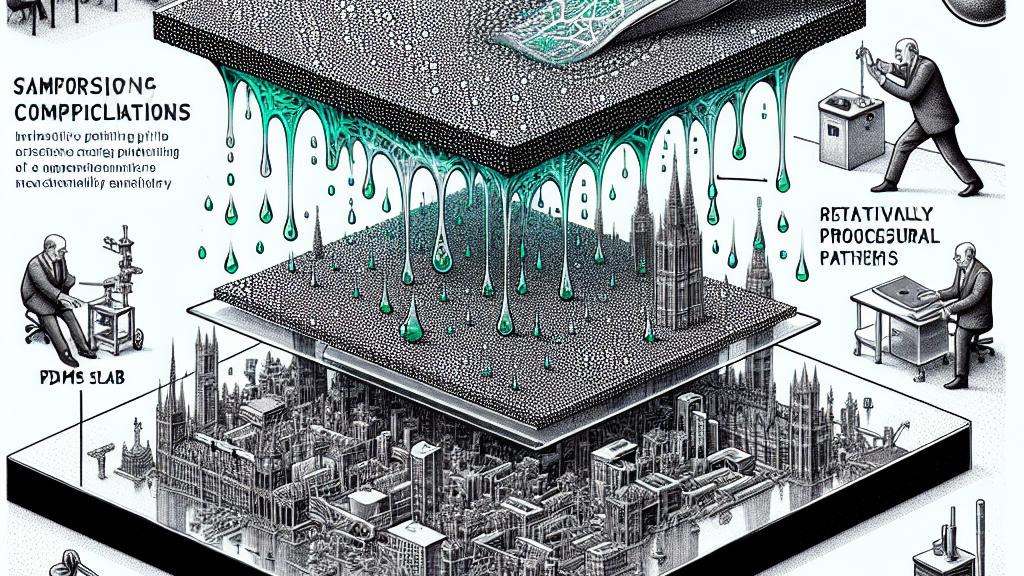Innovative Printing Technique for Nano/Microstructures on Glass
Overview
- A revolutionary printing technique enables the creation of stunning nano/microstructures on glass surfaces.
- This method not only offers functionalities like water-repellency but also produces eye-catching structural colors.
- Its diverse applications range from advanced gas sensors to innovative anti-fogging solutions and atmospheric water harvesting technologies.

Overview of the Technique
In a significant scientific advancement, researchers in Japan from the National Institute for Materials Science and the University of Connecticut have unveiled an extraordinary printing technique. This method excels at creating intricate periodic nano/microstructures directly on glass substrates using a polydimethylsiloxane (PDMS) slab. As this slab is pressed onto the glass, it transfers detailed patterns effortlessly, opening doors to materials crafted with essential functionalities such as remarkable water-repellency and vibrant structural colors. What’s truly remarkable is that this innovative technique avoids the heavy costs and complexities associated with traditional methods, which often involve cumbersome machinery and prolonged processing time. Therefore, it represents a breakthrough that makes sophisticated material design accessible and practical across industries.
Benefits of the New Method
The true magic of this technique lies in its efficiency and versatility. The ability to produce a wide array of patterns—from gracefully wavy designs to intricate wrinkled surfaces—offers limitless creative potential. For instance, by incorporating materials like silicone oils or silica nanoparticles into the PDMS, researchers can craft specialized surfaces that are not only visually captivating but also functional. Imagine the possibilities: anti-fogging coatings for eyeglasses that transform visibility, or sensor materials with enhanced capabilities for environmental monitoring. This method drastically reduces production costs while addressing critical market needs, thereby paving the way for cutting-edge solutions in fields like energy harvesting and atmospheric science. The potential for groundbreaking gas sensors grounded in this technology is especially exciting, offering heightened sensitivity and functionality to meet modern challenges.
Future Prospects of the Technique
Looking ahead, the team is committed to fine-tuning their experimental conditions, which will enable a broader range of nano/microstructures to be printed. As glass substrates are increasingly recognized in next-generation semiconductor technologies—like Intel's ambitious plans for multi-chiplet packaging—there is palpable excitement surrounding the impact of this printing technique. The ability to produce innovative applications in personalized biofabrication, or efficient atmospheric water harvesting, could catalyze a remarkable transformation across various industries. Picture a future where our daily products are crafted not only for efficiency but also for sustainability, merging form and function seamlessly. With a world burgeoning with potential, this technology stands poised to reshape our interaction with materials, heralding a new era in science and engineering with unprecedented innovations. It may indeed redefine the entire landscape of possibilities before us.

Loading...